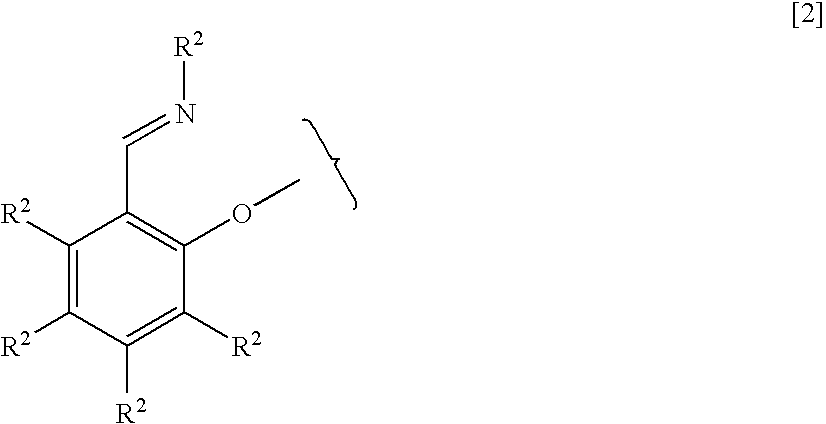Process for producing olefin polymer
a technology of olefin polymer and olefin polymer, which is applied in the direction of hydrocarbons, hydrocarbon by addition and hydrogenation, organic chemistry, etc., can solve the problems of deterioration of catalyst performance, olefin polymer tackiness, and powder characteristics, etc., to achieve good powder characteristics, reduce hydrogen concentration, and improve olefin polymer tackiness
- Summary
- Abstract
- Description
- Claims
- Application Information
AI Technical Summary
Benefits of technology
Problems solved by technology
Method used
Image
Examples
example 1
[Preparation of Titanocene Compound Solution]
[0108]The inside of a flask having 1 L inner volume was replaced with nitrogen. Into this vessel 4.5 g of dicyclopentadienyltitanium dichloride (manufactured by KANTO CHEMICAL CO., INC.) and 928 mL of hexane were charged and at the same time stirred at room temperature, and 72 millimoles of triethyl aluminum was charged to obtain a solution. This solution was further diluted with hexane.
[Prepolymerization]
[0109]Into an autoclave made of SUS having 3 L inner volume and fitted with a stirrer, 1.5 L of n-hexane sufficiently subjected to dehydration and degasification treatments, 30 millimoles of triethyl aluminum, and 3.0 millimoles of cyclohexylethyldimethoxysilane were charged. Therein 16 g of a solid catalyst component, which was prepared by a method same as that of Example 1 of Japanese patent application No. 2008-277945, was added, 32 g of propylene was continuously fed in about 40 minutes while keeping the temperature in the autoclave ...
example 2
[0115]Except adding ethanol as a polymerization activity depressant in place of oxygen in an amount corresponding to 0.79 mole calculated in terms of ethanol molecular weight per mole of triethyl aluminum fed to the first stage propylene polymerization reactor to the reactor, gas feed rates were adjusted so as to give the same gas concentration ratios (mole %) in the copolymerized portion reactor as in Example 1, and the copolymerized portion hold amount was adjusted so as to give the same copolymerized portion content as in Example 1. Then, a bulk density of polymerized powder was 0.310 g / cc. In the reactor, hydrogen feed rate was 270 NL / H. The bulk density of powders was 0.464 g / cc and the proportion of agglomerates was 803 ppm.
PUM
| Property | Measurement | Unit |
|---|---|---|
| density | aaaaa | aaaaa |
| density | aaaaa | aaaaa |
| density | aaaaa | aaaaa |
Abstract
Description
Claims
Application Information
 Login to View More
Login to View More - R&D
- Intellectual Property
- Life Sciences
- Materials
- Tech Scout
- Unparalleled Data Quality
- Higher Quality Content
- 60% Fewer Hallucinations
Browse by: Latest US Patents, China's latest patents, Technical Efficacy Thesaurus, Application Domain, Technology Topic, Popular Technical Reports.
© 2025 PatSnap. All rights reserved.Legal|Privacy policy|Modern Slavery Act Transparency Statement|Sitemap|About US| Contact US: help@patsnap.com

